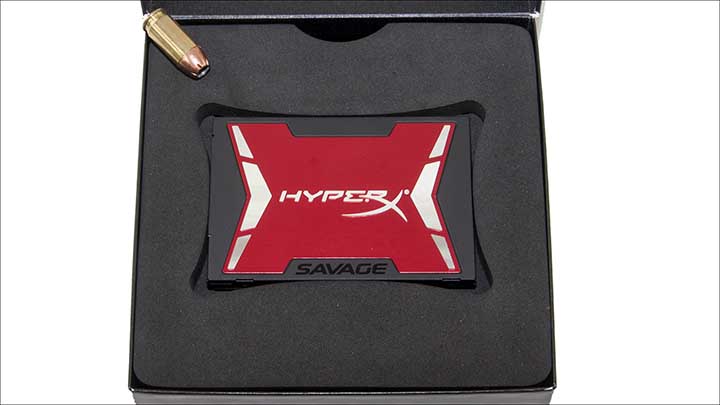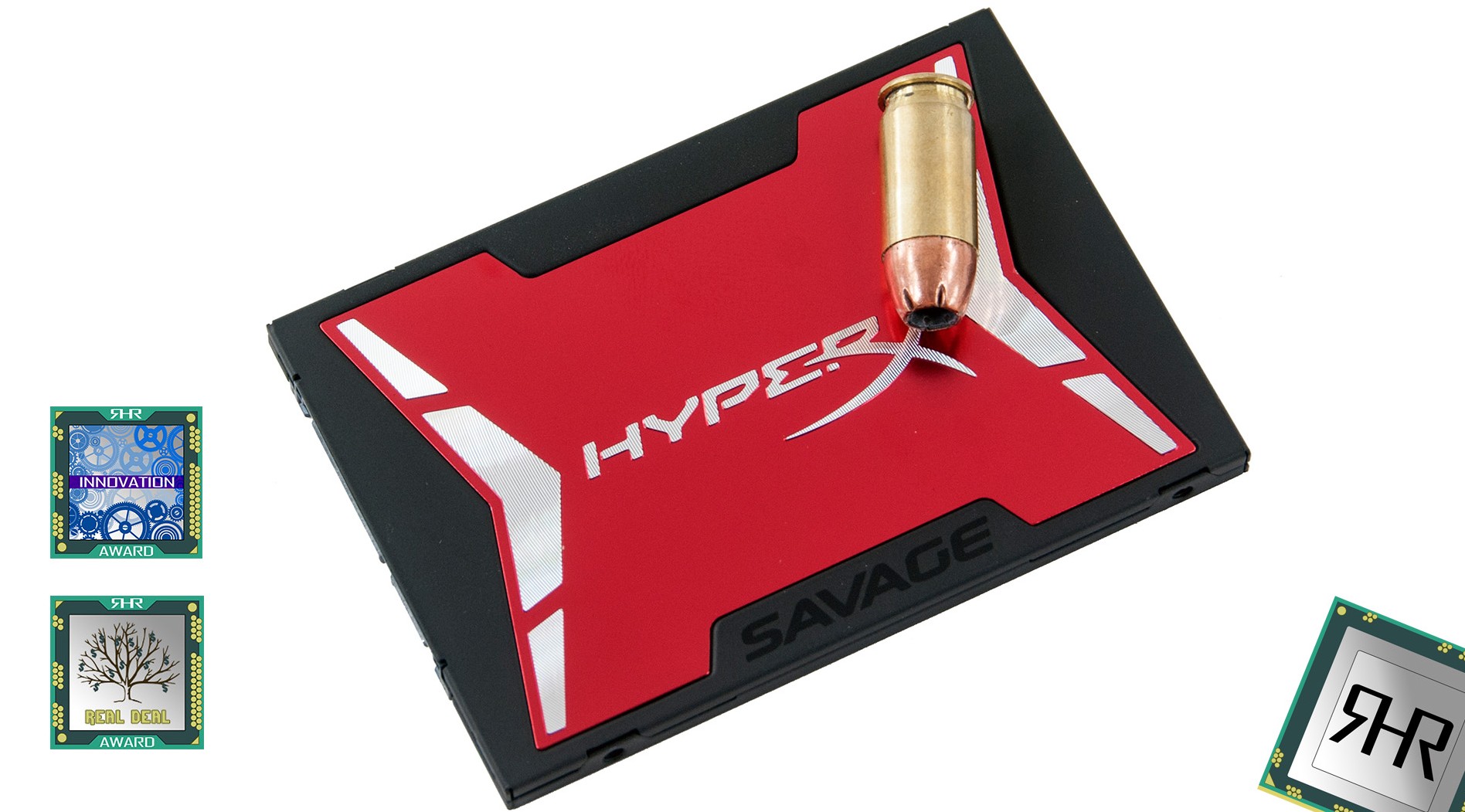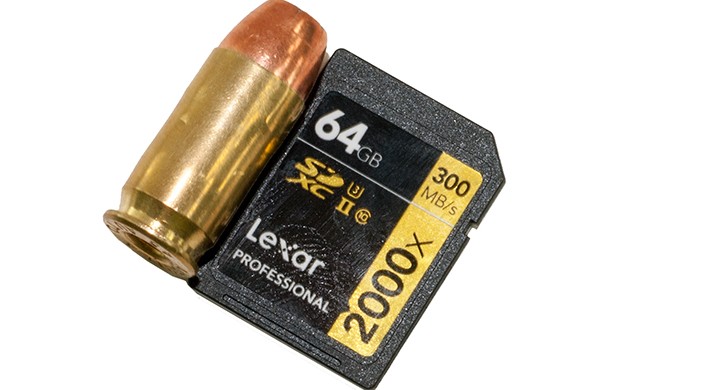 Because our sample is the slightly more expensive Bundle Kit our Savage 240GB drive came in a rather large – for a Solid State Drive – shipping container. This is because with the Bundle Kit you get a heck of a lot more than just a drive! Before we move on to exactly what you get, there is one nice little bonus feature that purchasing the Bundle Kit nets you: much improved protection.
Because our sample is the slightly more expensive Bundle Kit our Savage 240GB drive came in a rather large – for a Solid State Drive – shipping container. This is because with the Bundle Kit you get a heck of a lot more than just a drive! Before we move on to exactly what you get, there is one nice little bonus feature that purchasing the Bundle Kit nets you: much improved protection. Instead of just a plastic tray, or similar levels of protection that standalone solid state drives come with, this bad boy comes cocooned inside a medium density foam liner that will protect this drive from downright extreme levels of abuse. Unless Mister Postman runs the box over with his truck we doubt it can be killed in-transit. This level of peace of mind is all by itself worth the couple extra dollars.
Instead of just a plastic tray, or similar levels of protection that standalone solid state drives come with, this bad boy comes cocooned inside a medium density foam liner that will protect this drive from downright extreme levels of abuse. Unless Mister Postman runs the box over with his truck we doubt it can be killed in-transit. This level of peace of mind is all by itself worth the couple extra dollars. By the same token the accessories which comes with the Bundle Kit are nothing to sneeze at. Not only do you get a SATA 6Gb/s cable, and 3.5′ adapter plate, and a free copy of Acronis True Image HD, you also get a USB 3.0 enclosure, and a Kingston branded multi-head screwdriver. This combination makes cloning your old drive to your new Kingston Savage drive a snap – even if you do not have a free SATA port. We truly wish more companies would offer such a ‘Bundle Kit’ as this makes things so much easier.
By the same token the accessories which comes with the Bundle Kit are nothing to sneeze at. Not only do you get a SATA 6Gb/s cable, and 3.5′ adapter plate, and a free copy of Acronis True Image HD, you also get a USB 3.0 enclosure, and a Kingston branded multi-head screwdriver. This combination makes cloning your old drive to your new Kingston Savage drive a snap – even if you do not have a free SATA port. We truly wish more companies would offer such a ‘Bundle Kit’ as this makes things so much easier. As with most HyperX models, the HyperX Savage is rather striking looking. Everything from its big, bold red ‘X’ to the ‘Savage’ imprinted along the bottom border simply makes this drive standout from the typical entry level drive. Also of note is that this device makes use of the smaller 7mm form-factor instead of the older 9.5mm Z-height form-factor (it does come with a 2.5mm adapter though if you need 9.5mm z-height). This allows the Savage to fit inside smaller form-factor devices that older Kingston models would simply not fit.
As with most HyperX models, the HyperX Savage is rather striking looking. Everything from its big, bold red ‘X’ to the ‘Savage’ imprinted along the bottom border simply makes this drive standout from the typical entry level drive. Also of note is that this device makes use of the smaller 7mm form-factor instead of the older 9.5mm Z-height form-factor (it does come with a 2.5mm adapter though if you need 9.5mm z-height). This allows the Savage to fit inside smaller form-factor devices that older Kingston models would simply not fit. By cracking open the chassis and looking inside we can see that Kingston pulled out all the stops with this drive. First and foremost, unlike say the Crucial BX100 the HyperX Savage makes use of a full length PCB – and has fully populated it with 16 NAND ICs. Equally impressive is that Kingston did not opt for ONFi 3 NAND ICs, instead they went for the ultra-potent Toshiba A19 Toggle Mode NAND ICs. These NAND ICs are found mainly inside enthusiast grade solid state drives and are simply better than what even Crucial and their MX200 series uses.
By cracking open the chassis and looking inside we can see that Kingston pulled out all the stops with this drive. First and foremost, unlike say the Crucial BX100 the HyperX Savage makes use of a full length PCB – and has fully populated it with 16 NAND ICs. Equally impressive is that Kingston did not opt for ONFi 3 NAND ICs, instead they went for the ultra-potent Toshiba A19 Toggle Mode NAND ICs. These NAND ICs are found mainly inside enthusiast grade solid state drives and are simply better than what even Crucial and their MX200 series uses.
We can with 100% confidence say the ONFi 3 NAND ICs are 128Gbit NAND ICs and on 240GB drives it does not take that many to reach that storage level. This impacts NAND Interleaving – the number of NAND cells per channel. Crucial and others are fully aware of this and have used either smaller 4 channel controllers (BX100) or Drive Write Acceleration and other firmware hacks to boost performance on their 8 channel controller models (MX200). Compare and contrast that with this 64Gbit NAND ICs which are faster and require more ICs to hit the 240GB capacity. Long story short, with more NAND cells on each of the eight channels, and each of these cells simply faster than ONFI 1, 2 or 3 counterparts Kingston has thrown down the gauntlet with this beast! While the NAND is extremely interesting what the real star of this show is, is the Phison PS3110 controller (backstopped by a moderately sized 256MB DDR3-1600 ram buffer). Outside of USB flashdrive manufactures, Phison is not exactly a household name. In fact, some of their first attempts at making a Solid State Drive controller were met with rather tepid reception. This time however, Phison has come up with a controller that is darn interesting.
While the NAND is extremely interesting what the real star of this show is, is the Phison PS3110 controller (backstopped by a moderately sized 256MB DDR3-1600 ram buffer). Outside of USB flashdrive manufactures, Phison is not exactly a household name. In fact, some of their first attempts at making a Solid State Drive controller were met with rather tepid reception. This time however, Phison has come up with a controller that is darn interesting.
On the surface saying that the PS3110 is interesting may seem counter-intuitive. After all, using 8 channels and offering 550/530 MBps read and write performance with 100K/90K random IOPS is pretty much par for the course these days. So too is using a quad-core design for the controller. No it’s not it’s shear performance that makes this new controller a standout; rather it is how this drive handles load-balancing. In modern solid state drives, the controller and NAND are rarely idle. In fact, the controller is continuously waging a delicate balancing act between real time I/O requests, and garbage collection (and other low level tasks) that allow those I/O requests to be carried out on ‘clean’ NAND. In fact it is safe to say that a lot of what firmware enhancements boil down to is modifying how much of the cores activities are centered towards keeping NAND from entering a degraded state and how much is dedicated towards the end users demands!
Or at least that is how most controllers do things. The PS3110 on the other hand is designed using a completely different approach. Instead of have ‘X’ percent of all the cores working on real time IO requests and the rest of the time keeping the NAND clean, the PS3110 simply dedicates one core to real time requests and uses the other three for garbage collection and the other low level tasks that keep the drive ‘fast’. Time will tell whether or not this move is brilliant or insane…but it sure is different and there is almost no chances of a home user ever getting this drive into a degraded state! As an added benefit, since the PS3110 has three cores for internal housecleaning, the data retention abilities of this drive are equally impressive. Unlike most drives that only read ‘static’ data every so often to ensure that it is not becoming corrupted, the PS3110 actively reads all the NAND cells and tests the results against its ECC. By doing this data that is not quite corrupted but on its way to being just that can be caught before it becomes a problem and fixed – all seamlessly with no interaction with the host system or OS.
As an added benefit, since the PS3110 has three cores for internal housecleaning, the data retention abilities of this drive are equally impressive. Unlike most drives that only read ‘static’ data every so often to ensure that it is not becoming corrupted, the PS3110 actively reads all the NAND cells and tests the results against its ECC. By doing this data that is not quite corrupted but on its way to being just that can be caught before it becomes a problem and fixed – all seamlessly with no interaction with the host system or OS.
It is this combination of excellent price, top notch NAND, and cutting edge controller that makes the Kingston HyperX Savage so exciting.











